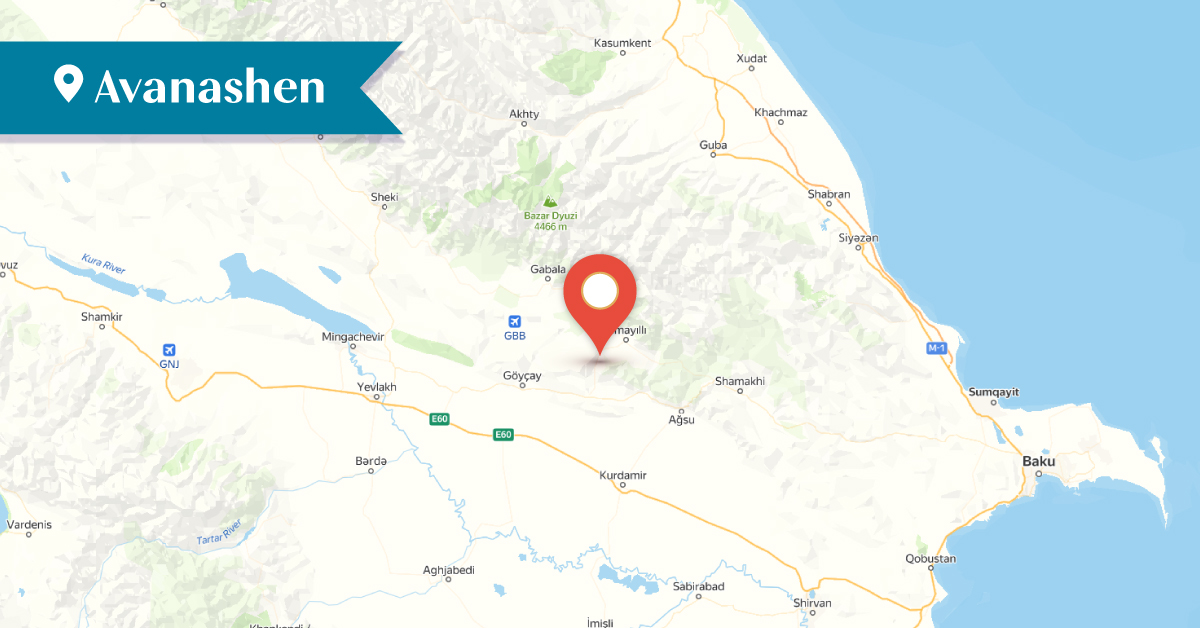2025
2025
2025-03-17

Avanashen village of the Ismayilli district was located 14 km southeast of the district center, on the right bank of the Gardman river. The village's inhabitants had migrated from the Dizak and Varanda districts of Artsakh, as well as from the Dashbulagh village of Khachen. There were resettlers from Zangezur, too.
During the visit of the notable ecclesiastical figure Archbishop Sargis Jalalyants in the mid-1850s, Avanashen had 80 Armenian households. In 1861, the village's population had grown to 100 households, and by 1865, it had reached 120 households. During the visit of Makar Barkhutaryants in 1890, the village had 130 households with a population of 500 males and 470 females.
In 1912, Avanashen was entirely inhabited by Armenians and had 160 households with a population of 1,528. The village suffered greatly during the 1918 attacks by Turkish troops and armed units from neighboring Tatar villages.
In the early years of Soviet rule, some survivors returned to their native village. By 1924, Avanashen had 90 Armenian households with 270 inhabitants. In the 1950s, the Soviet Azerbaijani government built an Azerbaijani-inhabited district near the village, after which the Armenian population of Avanashen gradually began to emigrate. By 1988, 40 Armenian families remained in the village, but they were forcibly displaced by the end of the same year.
During the visit of monument specialist Samvel Karapetyan, the Surb Astvatsatsin Church in Avanashen village was still preserved. The church was first mentioned in 1851. Makar Barkhutaryants copied the construction inscription of the church.
This Holy Mother of God Church is a memorial,
Built by Agha Kali Lazrov in the year 1752 of the Savior.
To the right of the church entrance, embedded in a finely hewn stone, a cross and the date were carved:
"Year 1786.”
The two-story building of the village’s parish school was located near the church, which, after the establishment of Soviet rule, functioned as the Avanashen school. In 1988, the village’s eight-year school had 20 students.
To the east of the church was the village cemetery, where monument specialist Samvel Karapetyan discovered inscribed tombstones dating back to the early 19th century.
About 3 km away from the village, on a hilltop, the old cemetery of Avanashen was located. By the time of S. Karapetyan’s visit, most of the tombstones were already covered with soil. The site was known as "Tarchkh."
The village is now called Ghoshakyand and is inhabited by Azerbaijanis.
Bibliography
Barkhutaryants M., Land of Aghvank and its Neighbors: Artsakh, Yerevan, 1999.
Karapetyan S., The Armenian Lapidary Inscriptions of Aghvank Proper, Yerevan, 1997.
Karapetyan, S., Aghvank Proper, Part 1, Yerevan, 2024, pp. 97-103.
Jalalyants S., A Trip to Great Armenia, Part B, Tbilisi, 1858.